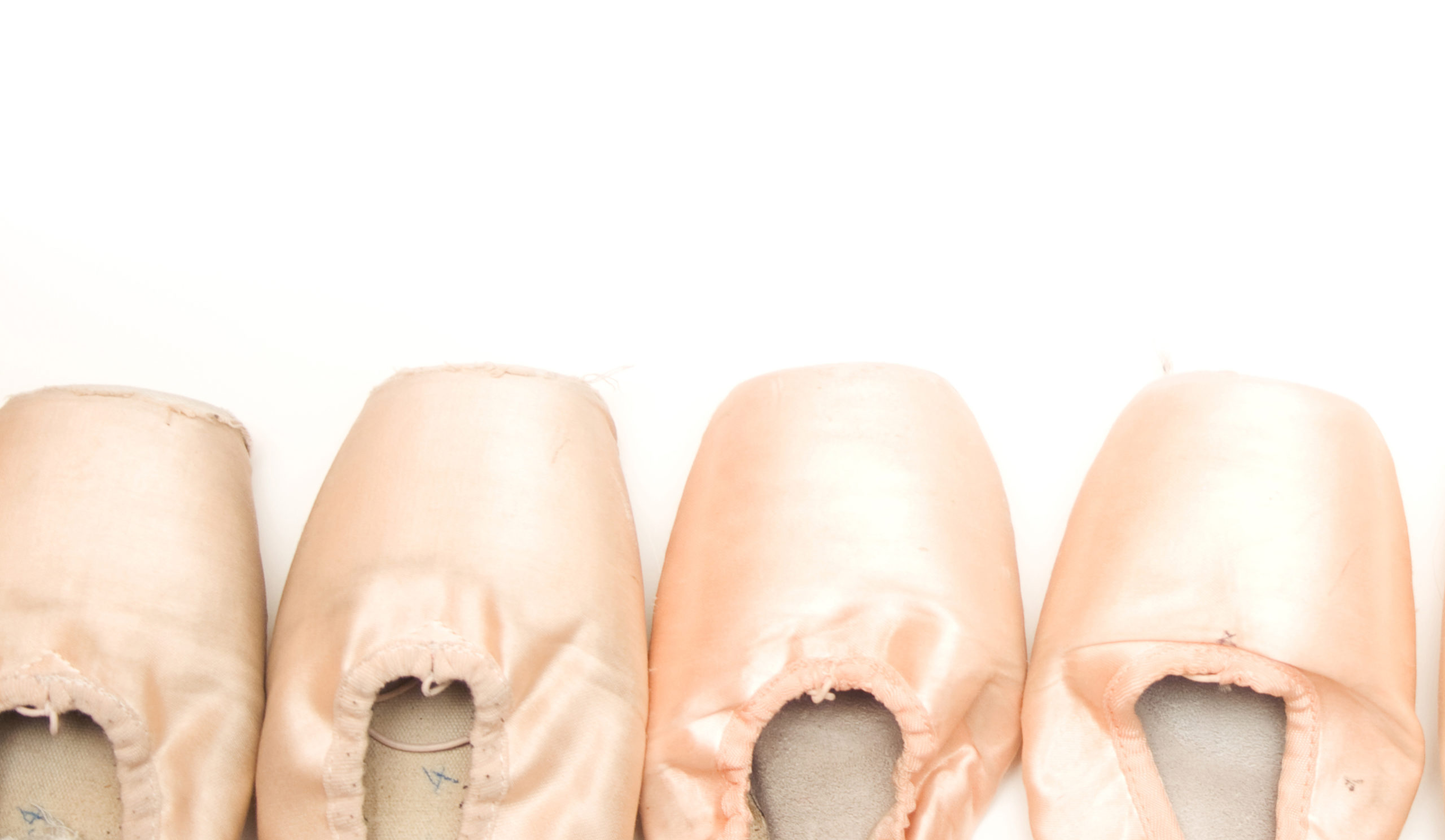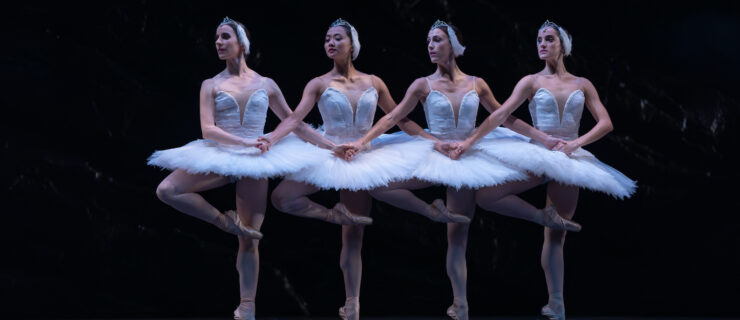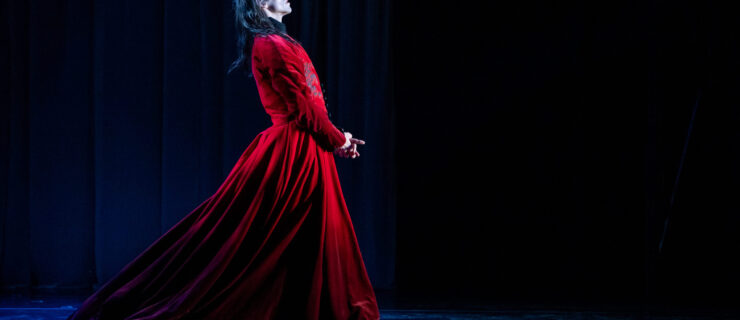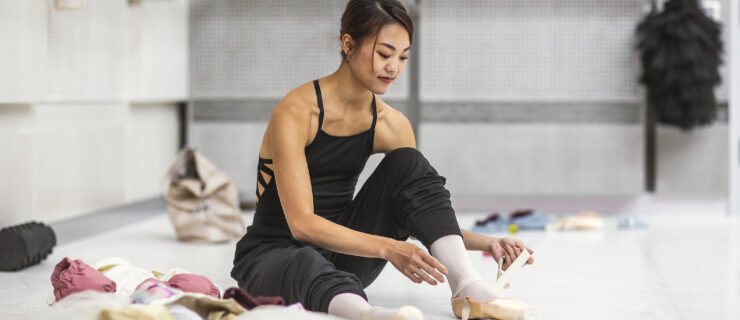Your Best Body: Running for Dancers
Most people in the ballet world will tell you not to run. “It will wreck your knees.” “Your thighs will get bulky.” “All that impact will shorten your career.”
Yet, in many ways, running would seem to be the ideal exercise for dancers. The repeated bounce strengthens your bones. The motion forces you to move in parallel, activating muscles that ballet dancers usually don’t use. Thirty minutes torches about 300 calories. The sustained effort makes your lungs and heart more efficient, increasing your stamina—and since a whopping 90 percent of dance injuries result from fatigue, that isn’t a perk to take lightly.
The truth is, dancers need to supplement their ballet training with aerobic activity: Studies show that technique class isn’t enough to prepare dancers for performance—the physical intensity of a show has higher aerobic requirements. Running is one of the quickest ways to make up the difference. “The problem is that running is a high-impact activity and dance is already high-impact,” says Nancy Kadel, MD, an orthopedic surgeon and chair of the Dance/USA Taskforce on Dancer Health.
Although running is actually gentler than ballet (the force of landing from a leap is equal to about 12 times your body weight; when running, it’s seven to eight times), running adds more strain to vulnerable joints. “That doesn’t mean dancers shouldn’t run,” says Kadel, “but you need to be smart about how you do it.”
Start Smart
The most common pitfall of running is attempting too much too soon. “Dancers are highly fit, so they’re tempted push right from the beginning,” says Emery Hill, an athletic trainer with Houston Ballet. You need to build up slowly to get the benefits without risking injury.
Before you begin a running regimen, prepare your body by practicing squats and lunges in parallel regularly. “Because ballet is a hyper-specific activity,” Hill says, “you need to strengthen other muscles with more general motions to handle a long run.” Start by briskly walking for 30 minutes two or three times a week. After a couple of weeks, walk for 15 minutes, run for 5, then walk the rest. Every 10 days, gradually increase your running by two minutes and decrease your walking, until you’re running the entire time.
Training Schedule
Once you’ve gotten into a groove, aim for 30- to 45-minute runs. More is not merrier here: Running for longer than an hour can work against you. “You don’t want to fatigue the body to the point where it can’t cope,” says Leigh Heflin, MSc, education and administrative coordinator for the Harkness Center for Dance Injuries at NYU Langone Medical Center’s Hospital for Joint Diseases. Overtraining can stress your hips, knees and ankles. “Muscle soreness is okay,” says Kadel, “but if you’re having joint pain, tendon discomfort, swelling or any localized pain to the bone, stop running and see a physician.”
How often you run depends on your dance schedule. Pacific Northwest Ballet principal Maria Chapman runs three to five times a week during the off-season, going for up to 50 minutes, but when her rehearsal schedule gets heavy, she does a 15- to 20-minute jog with speed intervals two or three times a week. “I have to tailor my running to my job,” she says. “I can’t be exhausted at work.”
Her strategy falls right in line with most trainers’ recommendations. “As you get closer to the show, run intensely but for less time, to get the body used to the high intensity of a performance,” says Hill. Early in the season, you can run three times a week, but during shows cut back to once or twice a week, aiming to hit 70 to 80 percent of your maximum heart rate for 15 to 20 minutes. (You can find simple heart-rate calculators online.) Don’t stop running altogether, or you’ll lose the endurance you built.
Form Issues
Pay attention to how you run. Although the motion forces most people into parallel, if your feet stubbornly turn out, try to bring them forward or else you could cause problems in your lower back or inner knee. Also, because dancers typically have tight calves, many push off from the ball of the foot, which can cause calf pain and aggravate the Achilles tendon. Aim for a rear- to mid-foot strike so that you roll through the entire foot.
Don’t stretch beforehand—you don’t need to increase your range of motion the way you would before dancing. Stretching can actually decrease muscle strength by as much as 30 percent for up to 30 minutes. Instead, stretch after your run, focusing on the calves, quads and hips.
Shoe Savvy
Just as dancing on a sprung floor is easier on your joints, so is running on a softer surface like grass or a cushioned track. But concrete sidewalks can work just fine if you have the right shoes. Skip the minimalist/barefoot hype; modern-day surfaces weren’t designed for naked feet, and running without solid shock absorption can lead to stress-impact injuries. Running shoes are engineered to support your body, correcting problematic twists of your ankles and diminishing the force of impact on hard ground. Get fitted for a pair by a running consultant at an athletic shoe store. They’ll be able to find what’s right for your foot and body type, and might even offer gait analysis.
Beyond the Physical
One benefit to running that ballet—or even the elliptical machine—can’t give you is the fabled “runner’s high.” Running for at least 30 minutes increases the body’s levels of endocannabinoids, chemicals that naturally lift our mood. Chapman knows the feeling well. For her, the chance to ditch the studio for a lakeside trail is just as important as improving her stamina. “When I’m running, it’s just me, my dog, and the wind and silence,” she says. “I’m kind of addicted.”
Facts and Fictions
Despite a common myth, running won’t create Arnold Schwarzenegger thighs. “It isn’t a strength-training or power exercise, so it’s not going to build up your legs, unless you’re genetically predisposed to bulking,” says Leigh Heflin, MSc, education and administrative coordinator for the Harkness Center for Dance Injuries at NYU’s Langone Medical Center. “And if you are, ballet class will already have done that.” On the contrary, running can actually make you leaner: It burns about 10 calories per minute (compared to 2 per minute in a typical ballet class), most of which comes directly from fat and carbohydrates.
One at a Time
How are those New Year’s resolutions coming along? Chances are your motivation is starting to lag: Research shows that up to 80 percent of resolutions are broken—most within the first three months.
Make sure you’ve set yourself up to succeed. Self-control is a finite resource that runs out as you use it, just like gas in a car. A recent study at Florida State University found that students who were told not to eat from a plate of cookies gave up on brain teaser exercises much sooner than those who were allowed to snack away. If your goal is to take Pilates more often, let yourself indulge in other areas, like updating your wardrobe. Once Pilates becomes a habit, it will be much easier to tackle additional goals.
Your Perfect Workout Partner
Athletes of all stripes swear by sports drinks to help them perform at their peak. But it turns out that a simple banana is just as effective. When researchers gave cyclists either a cup of sports drink or half a banana every 15 minutes over a 46-mile ride, both groups finished in the same amount of time with the same levels of energy-supplying glucose. That’s because bananas naturally have a near-perfect mix of carbohydrates, vitamins and antioxidants. Stash one in your dance bag whenever you need to sustain your strength for a long day of rehearsal.
Spice It Up
Forget bland, tasteless “health” food. You’re better off loading up your dinner with spices. Recent research shows that people eat about 5 to 10 percent less of a meal when it has a strong aroma. If you sprinkle on some rosemary or Szechuan pepper, you’ll enjoy your food more—and eat fewer calories.
Cool It
The key to a longer, stronger workout might be found in an unlikely place: cold hands. A recent study found that when women held a cooling device while exercising, their walking speed increased, their blood pressure dropped and after 12 weeks they lost an average of three inches from their waists. Apparently, chilling your hands sends cool blood back to your heart, which helps to decrease fatigue and boost endurance. Pack your water bottle with ice and hold it between combinations during your next class. It?’s a quirky trick, but you just might feel a bit of an extra lift in your grand jeté.
Battle of the Nut Butters
Most dancers are nut butter fiends. But is one option better than the rest? The calories, fat and protein are all roughly the same in each nut butter. The differences lie in the nutrients—particularly vitamin E, says Emily Harrison, MS, RD, LD, a dietitian at the Centre for Dance Nutrition in Atlanta. “Vitamin E is relatively hard to find in most dancers’ diets because it’s often in sources of fat. But it’s an important antioxidant that helps with recovery after hours of dancing.” With almost half of your daily vitamin E needs, sunflower seed butter is the winner. “But they’re all great sources of protein and good fats, so it really comes down to taste preference,” says Harrison. Just be sure to avoid brands with added sugar. And if you can, reach for varieties with blended flax seeds, which will also give you helpful omega-3s.





